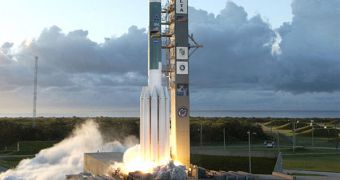Officials at the American space agency say that the Dawn mission has achieved a remarkable milestone recently, when it managed to use its onboard cameras for navigation for the first time.
The robotic probe is heading towards the asteroid Vesta, which many astronomers believe could be a protoplanet that was not given the chance to develop fully during the earliest days of the solar system.
Now, Dawn is capable of guiding its approach to the space object by using its own cameras, for the first time since its launch on September 27, 2007. Since then, the machine has been traveling towards the Inner Asteroid Belt (IAB).
This is an area laden with thousands upon thousands of meteorites and asteroids, and it's located at the boundary of the inner solar system, between the orbits of Mars and Jupiter. Most remarkably, it is home to Vesta and to the dwarf planet Ceres.
The latter is also a target for exploration. The NASA mission is scheduled to visit the small planet in 2015, after it spends some quality time analyzing Vesta. At this point, Dawn is scheduled to achieve orbital insertion around the massive asteroid on July 16.
“We feel a little like Columbus approaching the shores of the New World. The Dawn team can't wait to start mapping this terra incognita,” said the principal investigator of the mission, Christopher Russell.
The scientist, who is based at the University of California in Los Angeles (UCLA), made the announcement in a recent statement, Space reports. He adds that Dawn is now about 1.21 million kilometers away from its first target.
This is equivalent to roughly three times the distance separating Earth from the Moon, experts estimate. Once the probe reaches Vesta, they hope to be able to confirm predictions saying that the object may have planetary layers, as in a core, a mantle and a crust.
“After more than three and a half years of interplanetary travel, we are finally closing in on our first destination,” explains Dawn's chief engineer, Marc Rayman, who is based at the NASA Jet Propulsion Laboratory, (JPL), in Pasadena, California.
“We're not there yet, but Dawn will soon bring into focus an entire world that has been, for most of the two centuries scientists have been studying it, little more than a pinpoint of light,” he goes on to say.
The overall objective of this mission is to gain a deeper understanding of how objects in the early solar system formed, and also of the factors that prevented Vesta and Ceres from becoming fully-fledged planets themselves.

 14 DAY TRIAL //
14 DAY TRIAL //